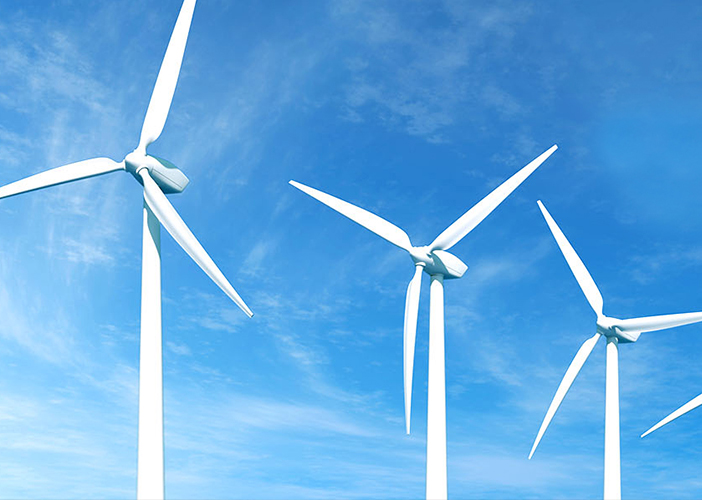
As a clean energy source that does not generate carbon dioxide that can cause the greenhouse effect, wind power is rapidly gaining popularity around the world.
Large wind turbines (windmills) are giant machines. Many 2MW wind power generation equipment under construction now has a blade length of about 40 meters, a rotating shaft height of 60 to 100 meters, and a total weight of no less than 200 tons. Therefore, the bearings used in windmills must also be large, with an inner diameter range of 100 mm to 700 mm. Some models require bearings with an inner diameter of nearly 2 meters. There are only 6 manufacturers in the world that can steadily supply such large bearings to the market. The wind turbine industry is now a global development industry. Therefore, in addition to bearing manufacturing, marketing activities and technical services are also carried out in major outlets around the world. These are important conditions.
Wind power bearings are a special type of bearing that are used in harsh environments, require high maintenance costs, and require a long lifespan.
1.Harsh use environment
2.High maintenance costs
3.Requires high lifespan
In the rolling bearing, only a part of the roller generally bears the load at the same time, and the area where this part of the roller is located is called the bearing bearing bearing area. The size of the load bearing and the size of the running clearance will affect the bearing area. If the bearing area is too small, the rollers are prone to slipping in actual operation. For the wind turbine gearbox, if the design of the spindle adopts the double bearing support scheme, then theoretically only the torque is transmitted to the gearbox. In this case, after a simple force analysis, it is not difficult to find that the load borne by the planetary carrier support bearing is relatively small, so the bearing bearing load area is often relatively small, and the rollers are prone to slipping.
In the design of wind turbine gearbox, planetary carrier support bearings generally use two single row tapered bearings or two full roller cylindrical bearings.
We can improve the bearing area by properly preloading the tapered roller bearing or reducing the clearance of the cylindrical roller bearing.
Copyright © 2023 - SVC Bearing Factory沪ICP备14051945号
Technical Support - Bearing.cn